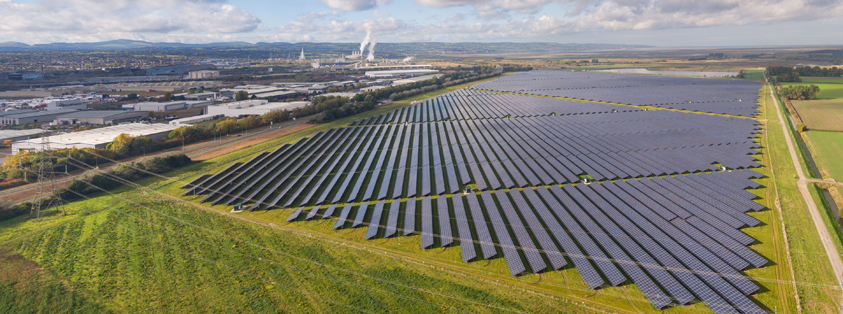Japan is emerging as a new global leader in promoting the Paris Agreement.
Over the past six months leading Japanese trading houses (Marubeni, Sojitz Corp., ITOCHU, Mitsui and Mitsubishi) have stated they will no longer own, nor invest in new thermal coal capacity.
Leading Japanese financial institutions are also rapidly re-assessing their business models, with partial coal exits and/or restrictions announced by Trust Bank, Nippon Life Dai-Ichi Life Insurance, and most recently MUFG.
Japan’s government is also examining its position, with Japan’s Environment Minister Yoshiaki Harada releasing a policy initiative in March 2019 stating the Ministry will not sanction the construction of new thermal coal plant facilities nor upgrade existing coal plant facilities in line with Japan’s international pledges to tackle global warming.
In South Korea, the Ministry of Trade, Industry and Energy recently tabled a new draft energy master plan that increases the nation’s ambition to move away from coal and nuclear towards renewable energy and gas, paving the way for financial and economic domestic transition.
And although China, the biggest importer, producer and consumer of thermal coal globally, is yet to act to limit the financing and building of new coal-fired power plants the recent move by SDIC Bank to exit coal investments entirely may be indicative of the country’s strategic intention going forward.
Asia’s increasing ambition to invest in new and increasingly lower cost domestic renewable energy technologies is reflecting the impact of a changing climate in recognising the economic, environmental and reputational concerns of institutions and governments alike.
Putting this into perspective, every week to-date in 2019 another globally significant financial institution has announced its exit from thermal coal. In addition to the five recent major coal exit announcements in Asia, two leading European insurers, UNIQA of Austria and MAPFRE of Spain, and one French asset manager, BNP Paribas of France, brought in new restrictions on thermal coal financing, insurance and/or investments during March 2019.
In April 2019, Australia’s QBE Insurance announced the cessation of investment in and insurance for thermal coal projects; Switzerland’s UBS announced an updated coal power exit policy; Norway’s Government Pension Fund Global confirmed it I investing in unlisted renewable energy infrastructure and tightening its criteria for divesting from companies invested in coal mining and coal-fired power generation; and major German insurer Hannover Re announced it is scaling back its thermal coal exposure over the long term. While Hannover Re’s initial May 2018 coal policy proposal was mostly an effort in ‘greenwashing’, the institution has now revisited and tightened their policy last month.
Investors are increasingly aware that global thermal coal forecasts are dour, with renewables inevitably emerging as the low-cost economic solution. Renewable technology and financials have moved on, and climate-energy policy shifts are increasing.
Environmental and reputational concerns are also driving factors for capital fleeing coal, particularly in Asia where air pollution issues are key. With cheaper renewable uptake gathering pace across Asia, the likelihood of investors having to wear billions of dollars in stranded assets banked in fossil fuels is impossible to ignore.
Singapore, South Korea and India are moving, and Japan has recently signalled an intention to transition its national energy plan to accelerate decarbonisation, although a formal policy announcement is yet to come forth. March 2019 sawThailand surprise all with its updated power development plan 2018-2037 halving their target for coal to just 12% by 2037, down from the previous 25% by 2036 target.
And while it is encouraging that SDIC has now fully divested from coal, a suite of policy ambitions by the Chinese government relating to their international investment programs coupled with significant announcements from industry and the banks would provide the necessary leadership to regional laggards that are yet to move.
Meanwhile, the global financial industry is continuing its capital flight from thermal coal and the coal power sector.
We expect this trend to continue to accelerate.
Tim Buckley (tbuckley@ieefa.org) is director of energy finance studies with IEEFA Australasia.
The views and opinions expressed in this article are the author’s own, and do not necessarily reflect those held by pv magazine.
This content is protected by copyright and may not be reused. If you want to cooperate with us and would like to reuse some of our content, please contact: editors@pv-magazine.com.








By submitting this form you agree to pv magazine using your data for the purposes of publishing your comment.
Your personal data will only be disclosed or otherwise transmitted to third parties for the purposes of spam filtering or if this is necessary for technical maintenance of the website. Any other transfer to third parties will not take place unless this is justified on the basis of applicable data protection regulations or if pv magazine is legally obliged to do so.
You may revoke this consent at any time with effect for the future, in which case your personal data will be deleted immediately. Otherwise, your data will be deleted if pv magazine has processed your request or the purpose of data storage is fulfilled.
Further information on data privacy can be found in our Data Protection Policy.